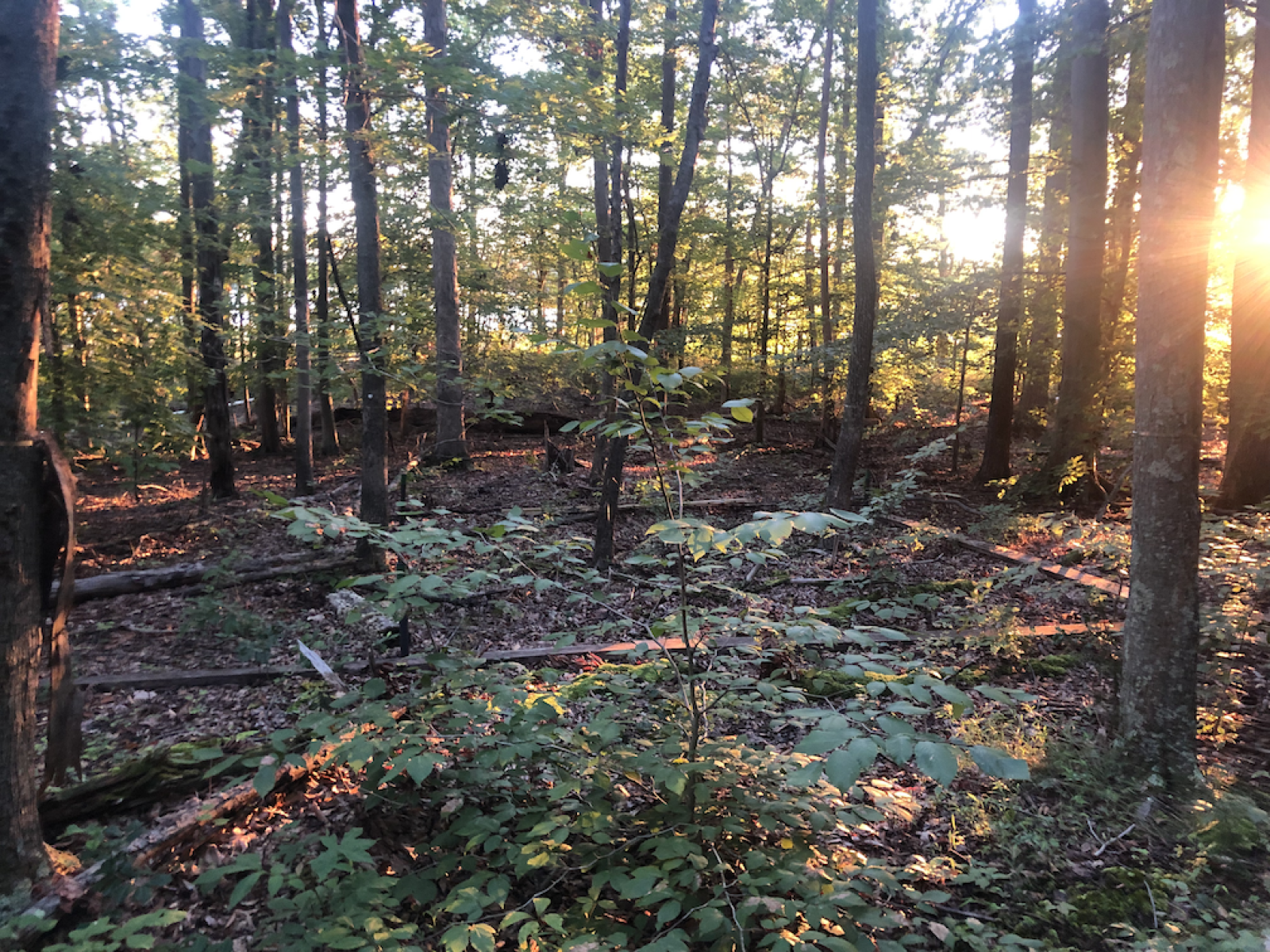A Unique Coastal Forest Flooding Experiment
A large-scale flooding experiment opens a new window into how coastal forests will respond to ongoing climate change

Standing pools of water during a 10-hour test flood event in a TEMPEST experiment forest plot in June 2022.
(Photo by Ben Bond Lamberty | Pacific Northwest National Laboratory)
The Science
Climate change is already producing rising sea levels and increasing storms, but scientists are uncertain about how resilient coastal forests might be to these impacts considering the soils and trees have no prior exposure to salt water. This study documented the infrastructure and performance of the Terrestrial Ecosystem Manipulation to Probe the Effects of Storm Treatments (TEMPEST), an experiment designed to periodically flood large forest plots with fresh and saline water and monitor the resulting ecosystem changes. Continued flood events in future years will improve our understanding of the stresses faced by coastal forests.
The Impact
This study demonstrated that a large-scale flooding experiment in coastal Maryland, USA, can deliver 15 cm of water, equivalent to the impact of a once-a-decade storm, to forested plots and intensively monitor the results. Test freshwater floods elevated the water table, ponded water on the surface, achieved extensive soil saturation, and created low-level inundation. Future flood events will be observed closely and linked with numerical models to improve our understanding of coastal forest ecosystems and their responses to short- and long-term environmental change.
Summary
Coastal upland forests are facing accelerating sea-level rise and changing storm regimes, but it is unclear what biogeochemical and plant physiological mechanisms lead to system resilience, and the cumulative impacts of events that lead to sudden ecosystem state change. The manipulative, ecosystem-scale TEMPEST experiment aims to understand how freshwater and saltwater floods may alter soil biogeochemical cycles and vegetation in a deciduous coastal forest. The experiment uses large (2000 m2) control, freshwater, and estuarine-water treatment plots. Experimental floods were enabled by a spatially distributed irrigation network at a rate just above the soil infiltration rate. This elevated the water table and achieved extensive soil saturation and low-level inundation. A TEMPEST simulation approximated a 15-cm rainfall event and, based on historical records, was of comparable intensity to a 10-year storm for the area. This study shows that the TEMPEST experiment is poised to test hypotheses about tree mortality and ecosystem change in coastal ecosystems, providing a crucial link between purely observational studies, data synthesis efforts, and smaller-scale field and laboratory manipulations.
PNNL Contact
Vanessa Bailey, Pacific Northwest National Laboratory, vanessa.bailey@pnnl.gov
Funding
The initial development of TEMPEST infrastructure was conducted with support from the PREMIS Initiative and conducted under the Laboratory Directed Research and Development Program at Pacific Northwest National Laboratory (PNNL). PNNL is operated by Battelle for the Department of Energy. TEMPEST simulations and monitoring were subsequently supported through the Field, Measurements, and Experiments (FME) component of the Coastal Observations, Mechanisms, and Predictions Across Systems and Scales (COMPASS) program (https://compass.pnnl.gov/). COMPASS-FME is a multi-institutional project supported by the US Department of Energy, Office of Science, Biological and Environmental Research as part of the Environmental System Science Program. This work was also supported by the Smithsonian Environmental Research Center.
Published: July 26, 2023
Hopple, A.M., Doro, K.O., Bailey, V.L. et al. Attaining freshwater and estuarine-water soil saturation in an ecosystem-scale coastal flooding experiment. Environ Monit Assess 195, 425 (2023). https://doi.org/10.1007/s10661-022-10807-0